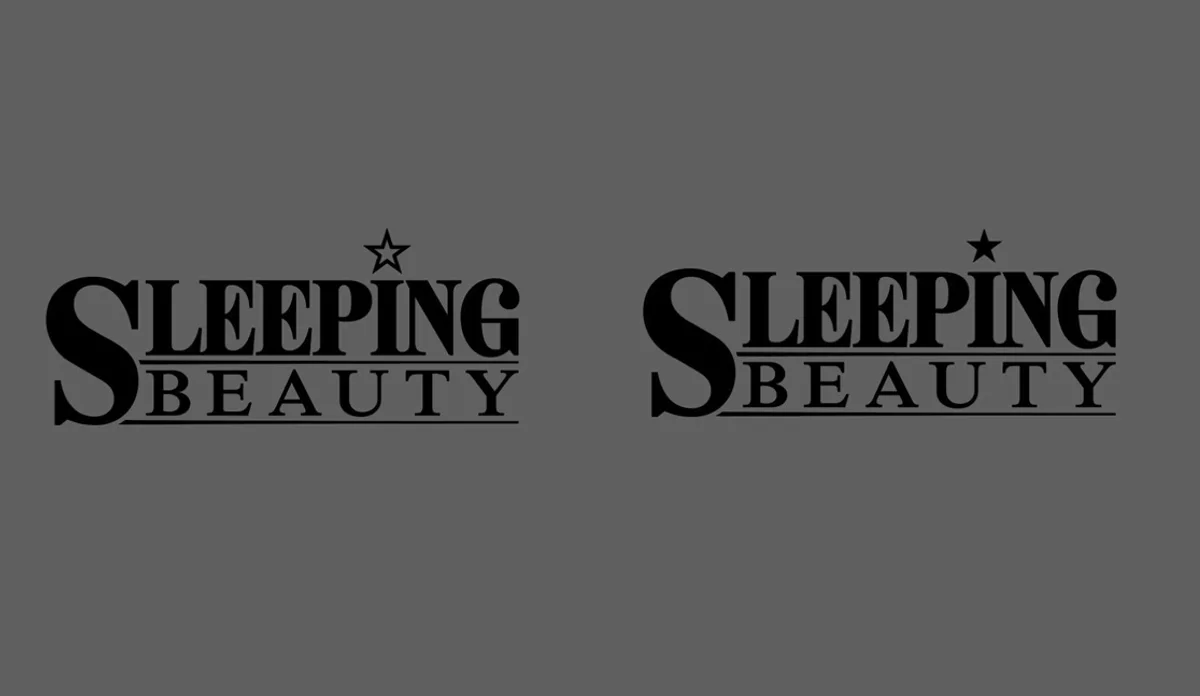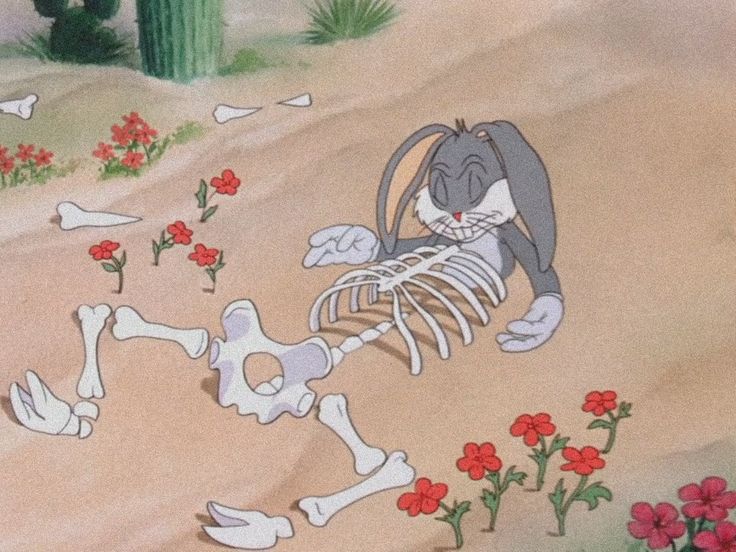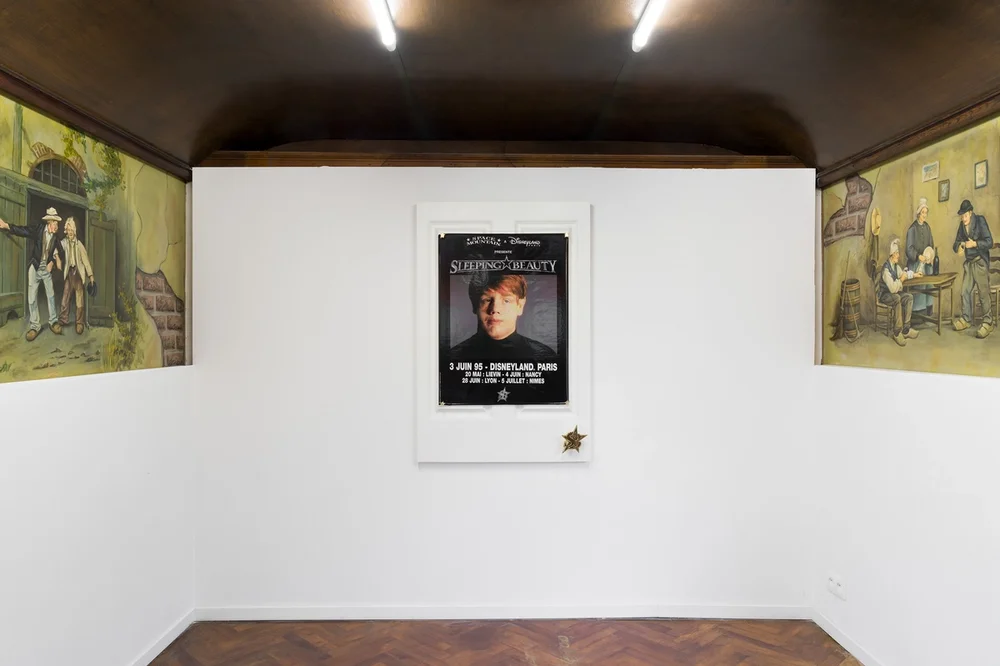
Sleeping Beauty: Episode 1
NOV. 24 - JAN. 20, 2025 @ Big appple, Brussels
Sleeping Beauty is a solo exhibition by Cécile di Giovanni, presented from November 24, 2024 to January 20, 2025 at Big Appple, Brussels. The exhibition was produced by Encore Label as CORE 002, the second chapter of their curatorial program, and was co-curated by Encore Label and Big Appple. It features a text by Cédric Fauq and an original soundtrack by musician Tumy.
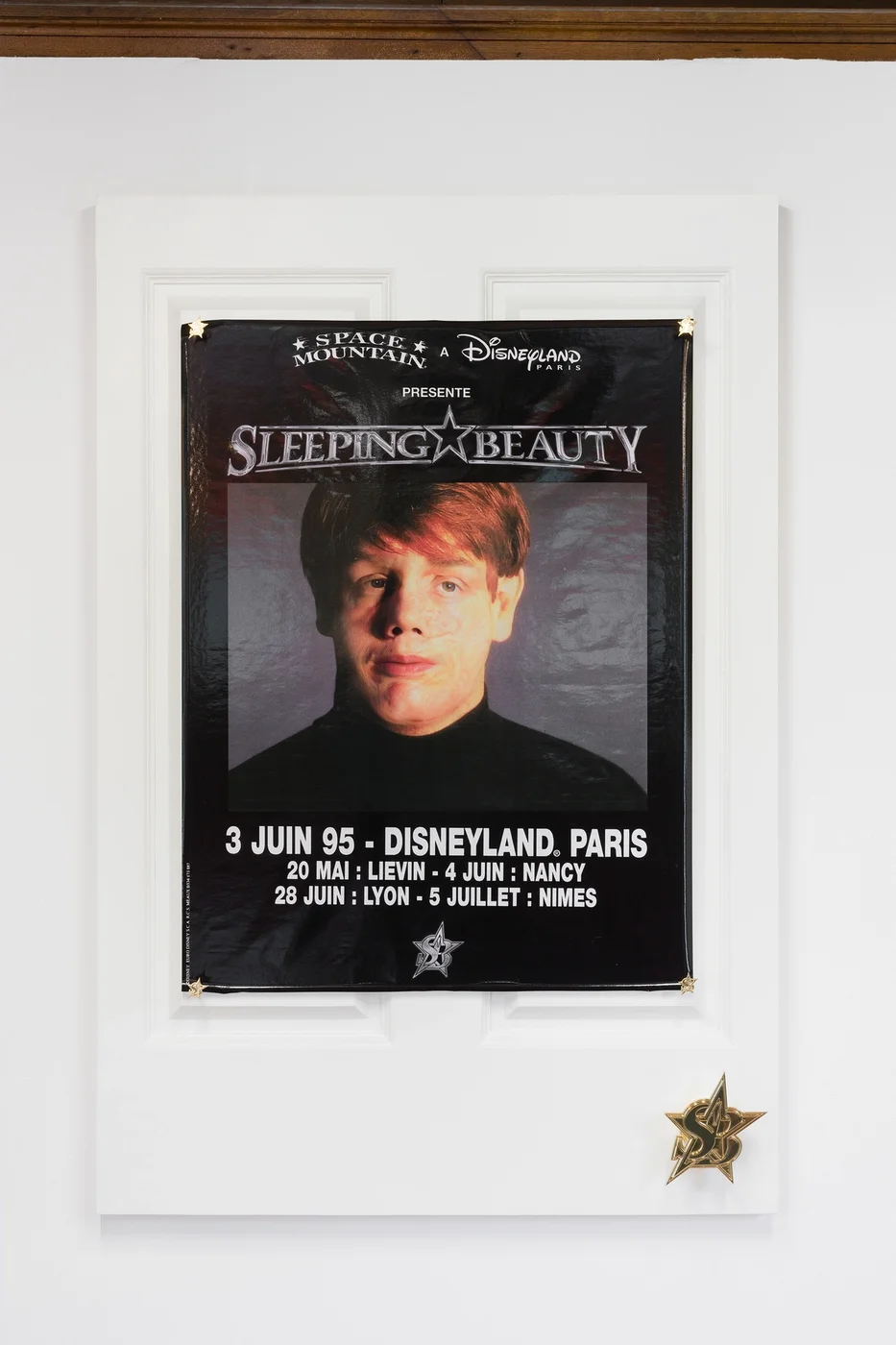
Sleeping Beauty begins from a moment suspended between visual memory, wishful thinking, and the decay of cultural icons over time. During her first visit to EuroDisney in 1995, artist Cécile di Giovanni believed she glimpsed Michael Jackson's silhouette behind the curtains of the Sleeping Beauty Suite, where he regularly stayed during his visits to Paris. This half-invented memory intertwines with a broader reflection on how Jackson's image has evolved over time, particularly as the understanding of him as a sexual predator emerged from FBI investigations at Neverland and allegations of sexual assault. These references, born in the '90s, are part of an extended mythical territory of images that remain in orbit around the "magical" factory created by that era.
The name Sleeping Beauty speaks to the project’s deeper theme of transformation, just as the fairy tale character awakens from a dream-like state. Through an immersive installation, viewers are invited into a fragmented world where familiar objects become simulacra, blurring the lines between authenticity and fiction. The project challenges us to consider how these shifting memories, tied to figures like Jackson, take on new meanings as they interact with the cloud of images that hover around cultural icons.

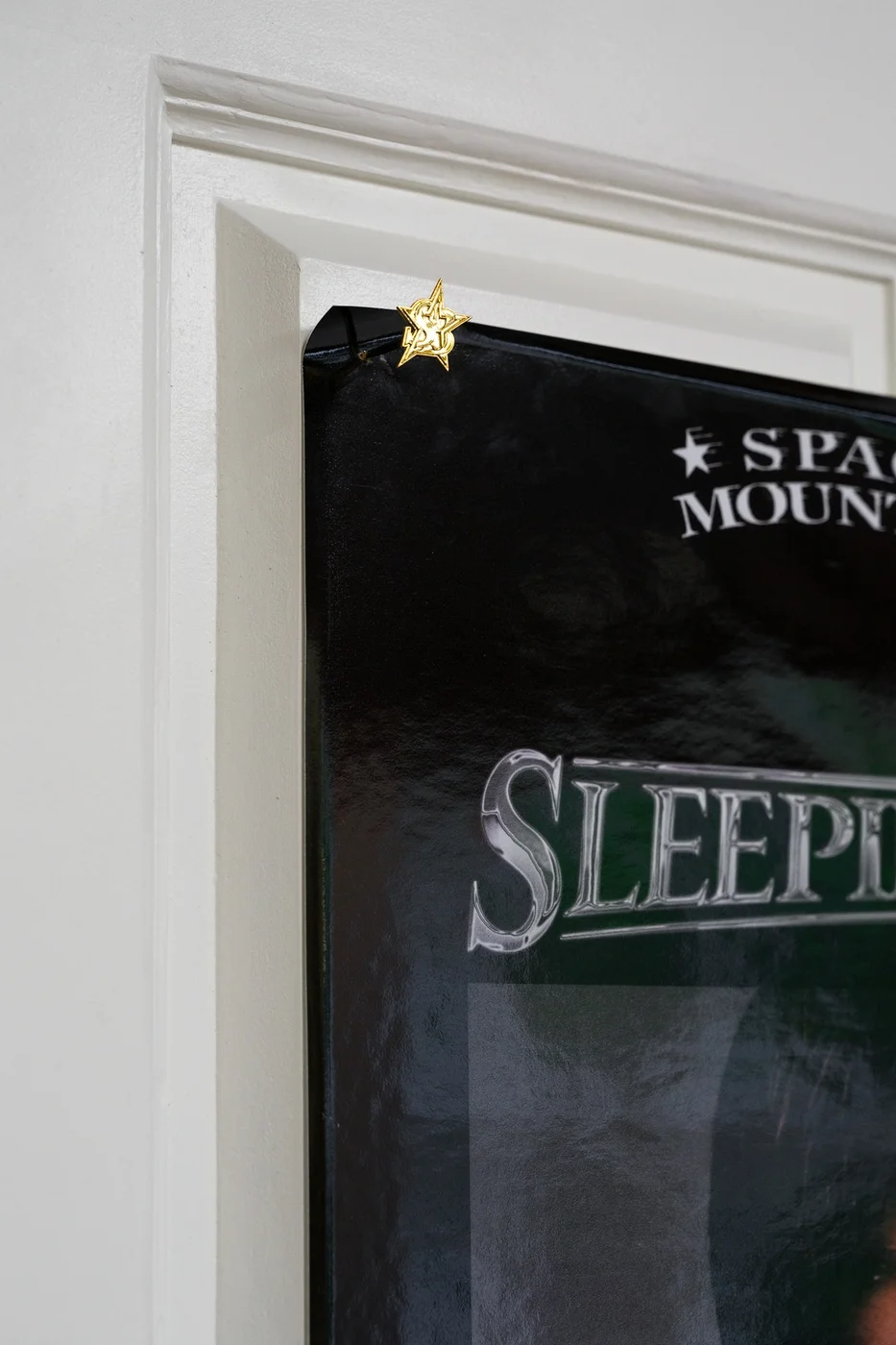
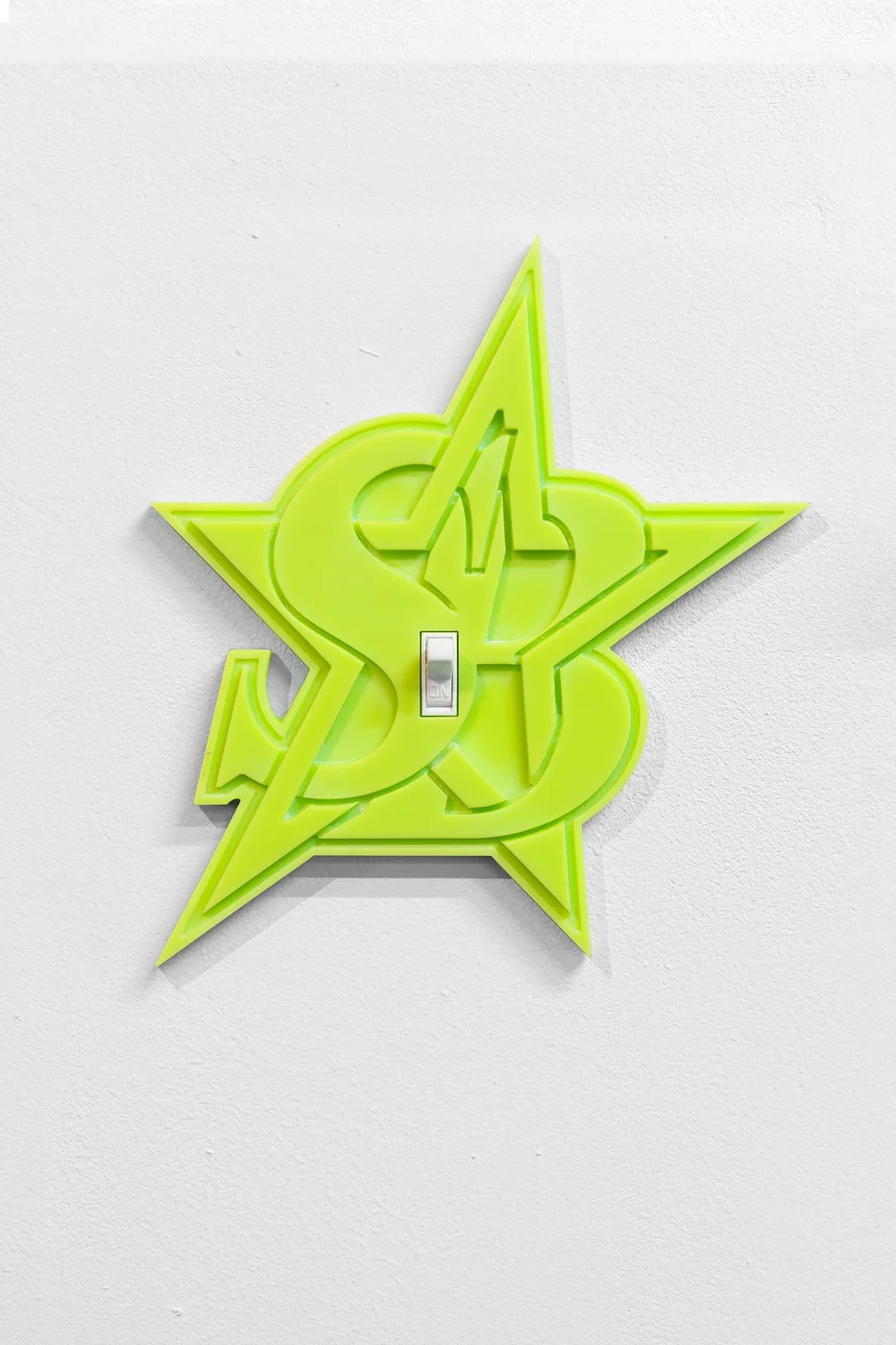

Drawing on the idea of dreams (sleep) and memory distortion, The 3 sculptures constituting the exhibitions are the artefacts of that situation, where altered perceptions affect our relationship with nostalgia, architecture, and personal history.

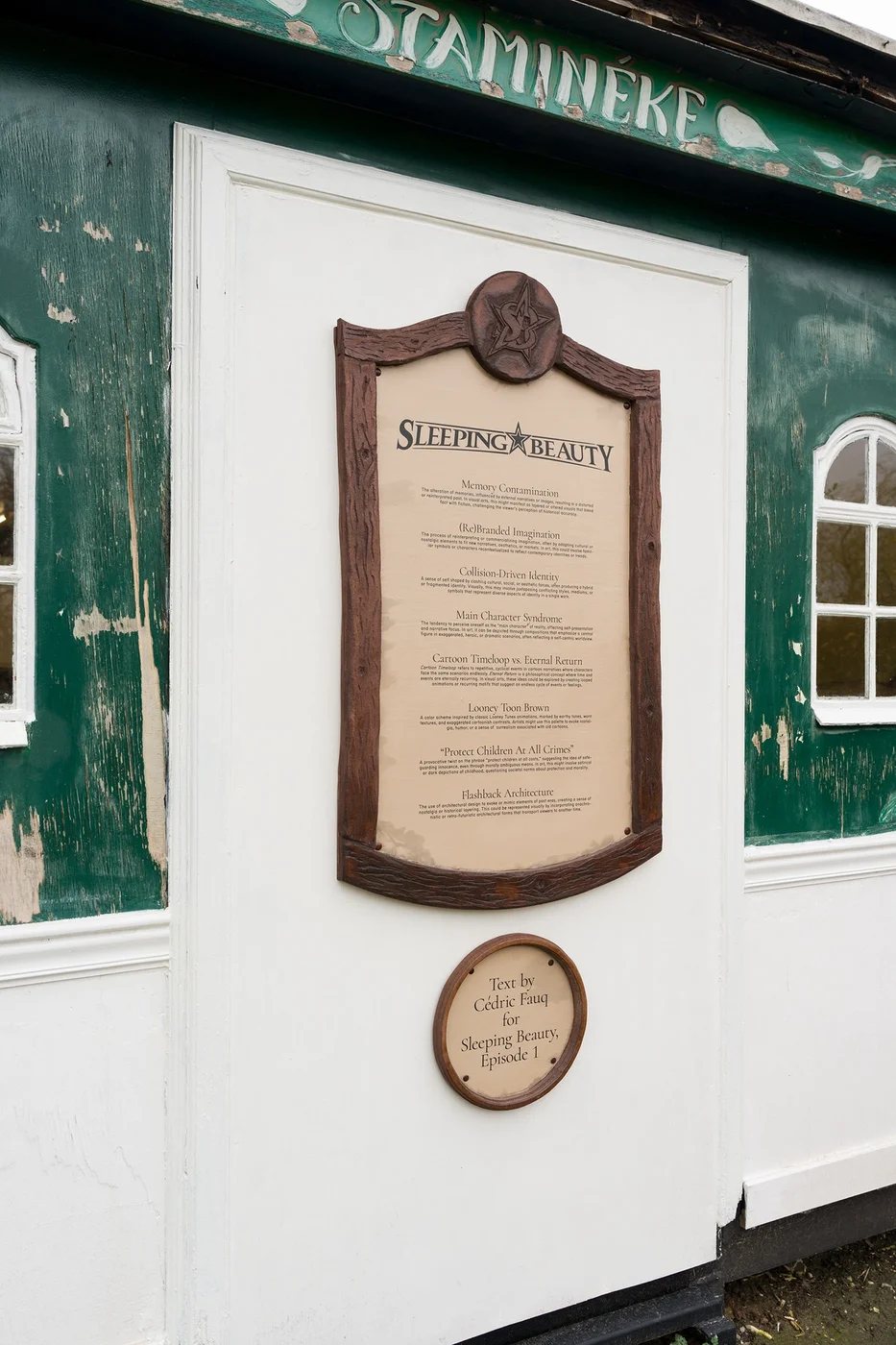


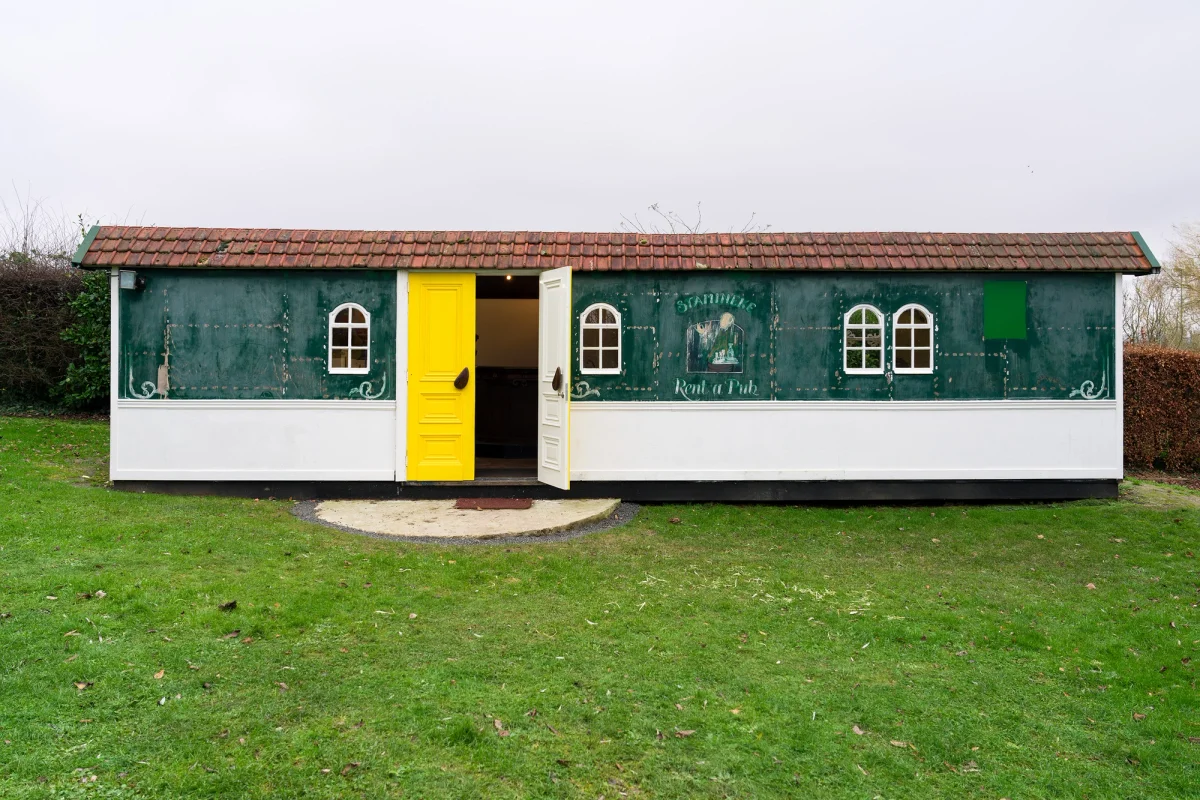
Inspiration
In Sleeping Beauty, I revisit an uncertain childhood memory: during a trip to Disneyland Paris in 1995, I thought I saw Michael Jackson through a window of the Sleeping Beauty suite. This memory — on the edge of fantasy — forms the starting point for a process of excavating memory, where collective imagery, saturated by media narratives and iconic figures, becomes infused with personal affect, to the point of merging with intimate recollection.
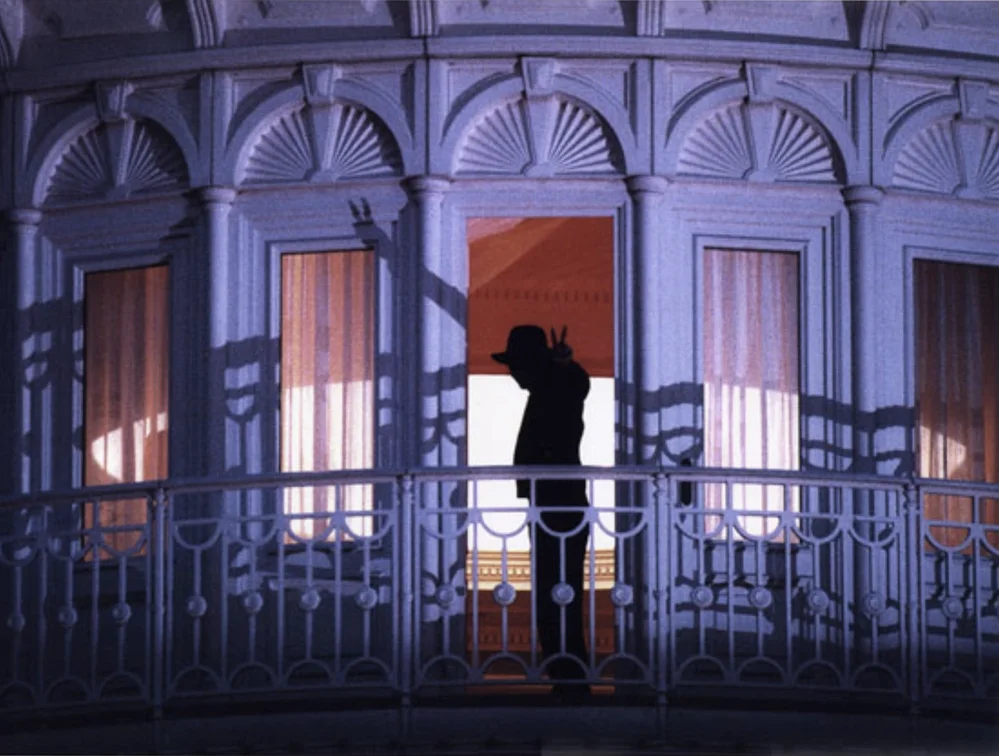
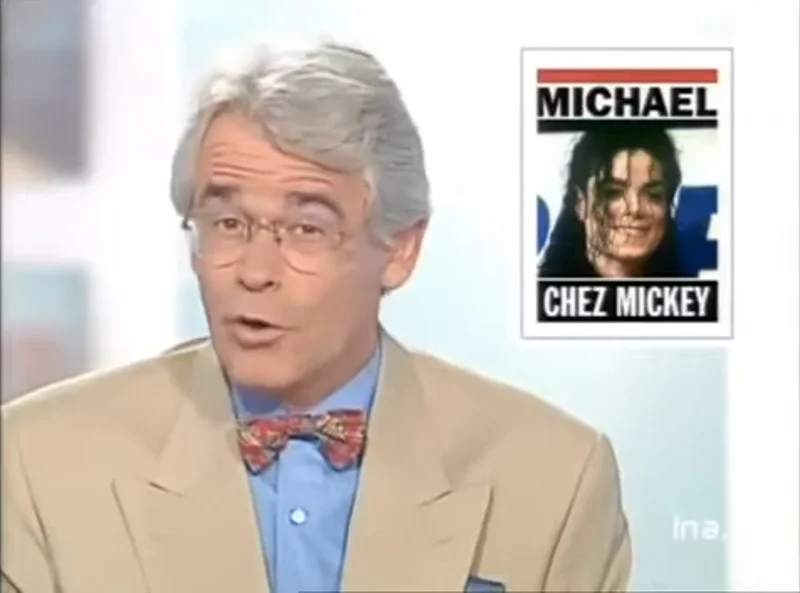
Michael Jackson did in fact stay at the Disneyland Paris Hotel just a few months before the artist's visit, in September 1994. He stayed with his then-wife, Lisa-Marie Presley, in the Sleeping Beauty Suite, a room he loved and often returned to during his regular visits. di Giovanni must have seen press photos or videos at the time, which only reinforced her conviction that, during her first visit to the park, he was hiding behind the curtains of one of the windows.
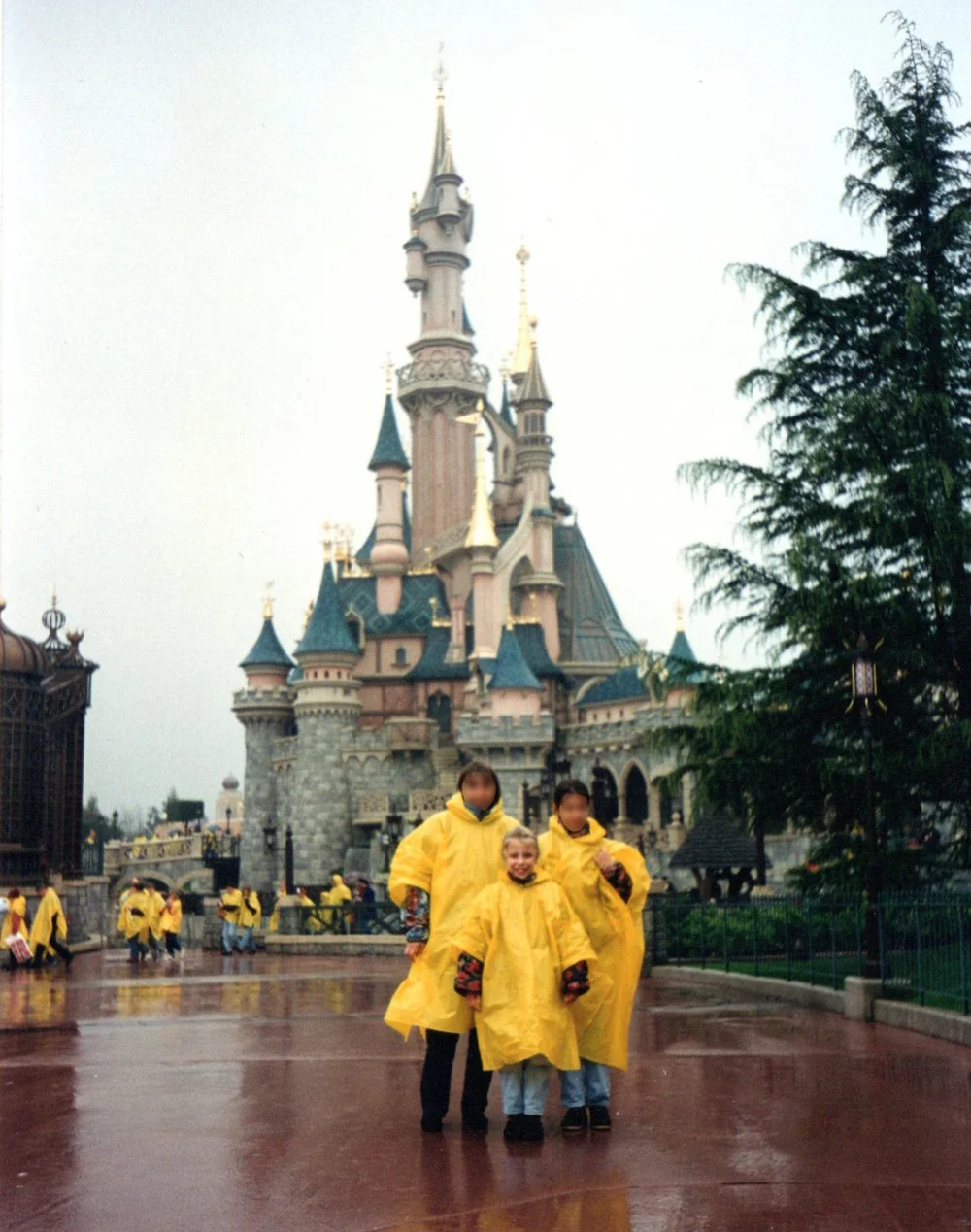
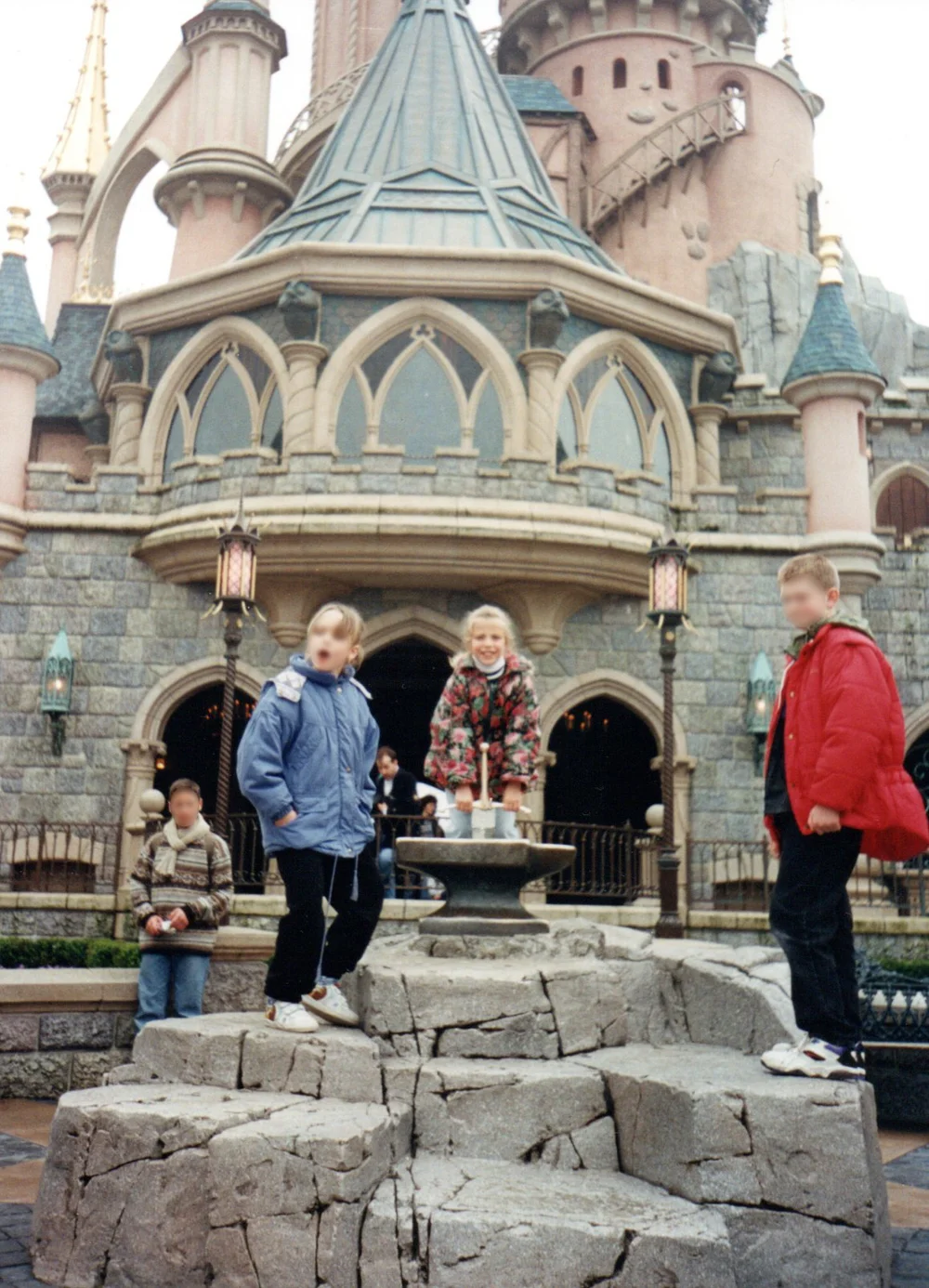
The di Giovanni family’s 1995 trip to Disneyland Paris stands as a formative memory, the starting point of the project. It was their first major journey by bus beyond southern France, and above all, the artist’s first tangible encounter, beyond the television screen, with North American pop culture, then widely broadcast across the French media landscape. One particular memory remains vivid: the blurred recollection of Michael Jackson possibly hiding behind the windows of the Disneyland Hotel. This moment crystallizes how media imagery can inscribe itself deep within the artist’s inner world, fusing real experiences with the fictional fragments that have surrounded her since childhood.
One of the key inspirations behind Sleeping Beauty: episode 1 is a haunting scene from Steven Spielberg’s Hook (1991), which deeply marked the artist as a child. Peter Pan returns home to find the house plunged in darkness, windows shattered, the door left ajar, and the terrifying realization that his children have been kidnapped by Captain Hook. Spielberg lingers on certain objects — a close-up of a turning doorknob, a light switch that no longer works — turning domestic details into unsettling signs of intrusion.
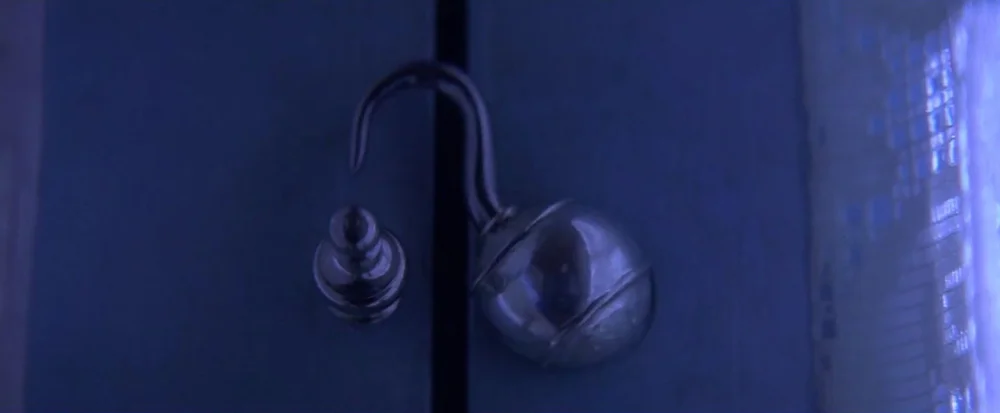


These cinematic elements resonate disturbingly with objects found years later at Michael Jackson’s Neverland Ranch: custom-made doorknobs, switch covers. By reworking these motifs as sculptural elements, di giovanni creates a mirror play between fiction and reality, childhood fears and adult suspicion, fairytale and true crime. In this space, the familiar becomes strange. What once seemed safe reveals hidden layers of ambiguity, where decor turns into a device, and innocence is overshadowed by doubt.
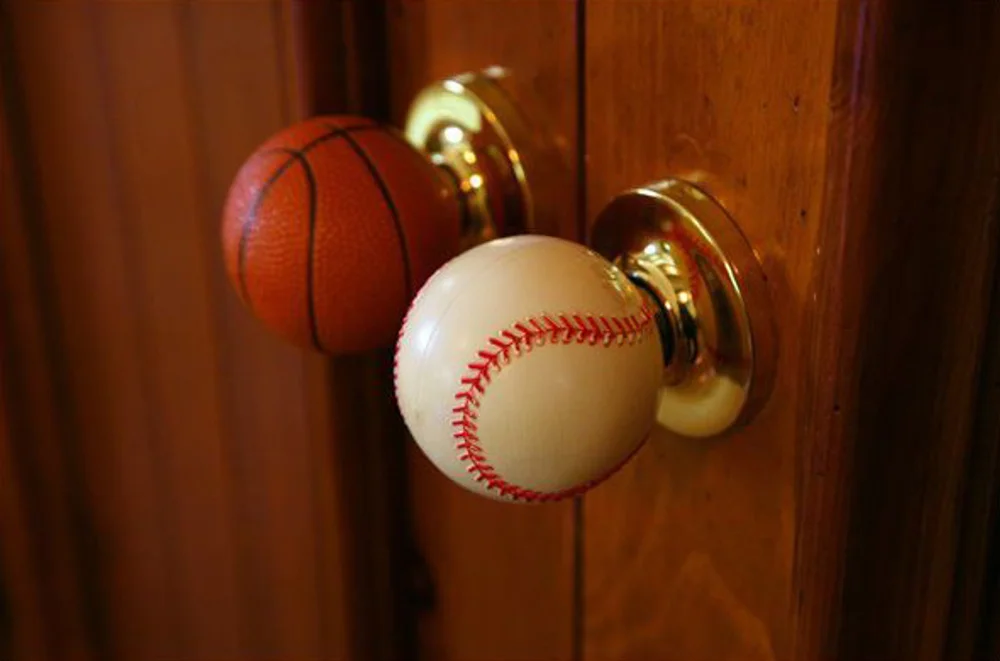


Some photos found online from Michael Jackson’s Neverland Ranch, taken from various sources — including the FBI, fans, and intruders who illegally entered the property. Most of the attention-grabbing elements are functional features — such as handles or switches — that have been repurposed and personalized within the ranch.
It is precisely this visual repetition, this shift between childhood decor and latent unease, that the installation seeks to activate. The objects created become distorted echoes of a saturated imaginary: one of seemingly protective spaces that have become charged with suspicion. They function as surfaces for projection, where the artist's own hauntings crystallize through a double movement: the childhood fear of abduction (as in Hook), and the adult suspicion of the hidden predator within the realm of childhood (as projected onto Neverland Ranch). By reworking these motifs — light switch, door fragment, logo reshaped into a handle — di Giovanni's stage a mirrored interplay between fiction and true crime, cinema and memory, set design and psychological device. A zone of ambiguity emerges, where the uncanny infiltrates what once felt familiar.
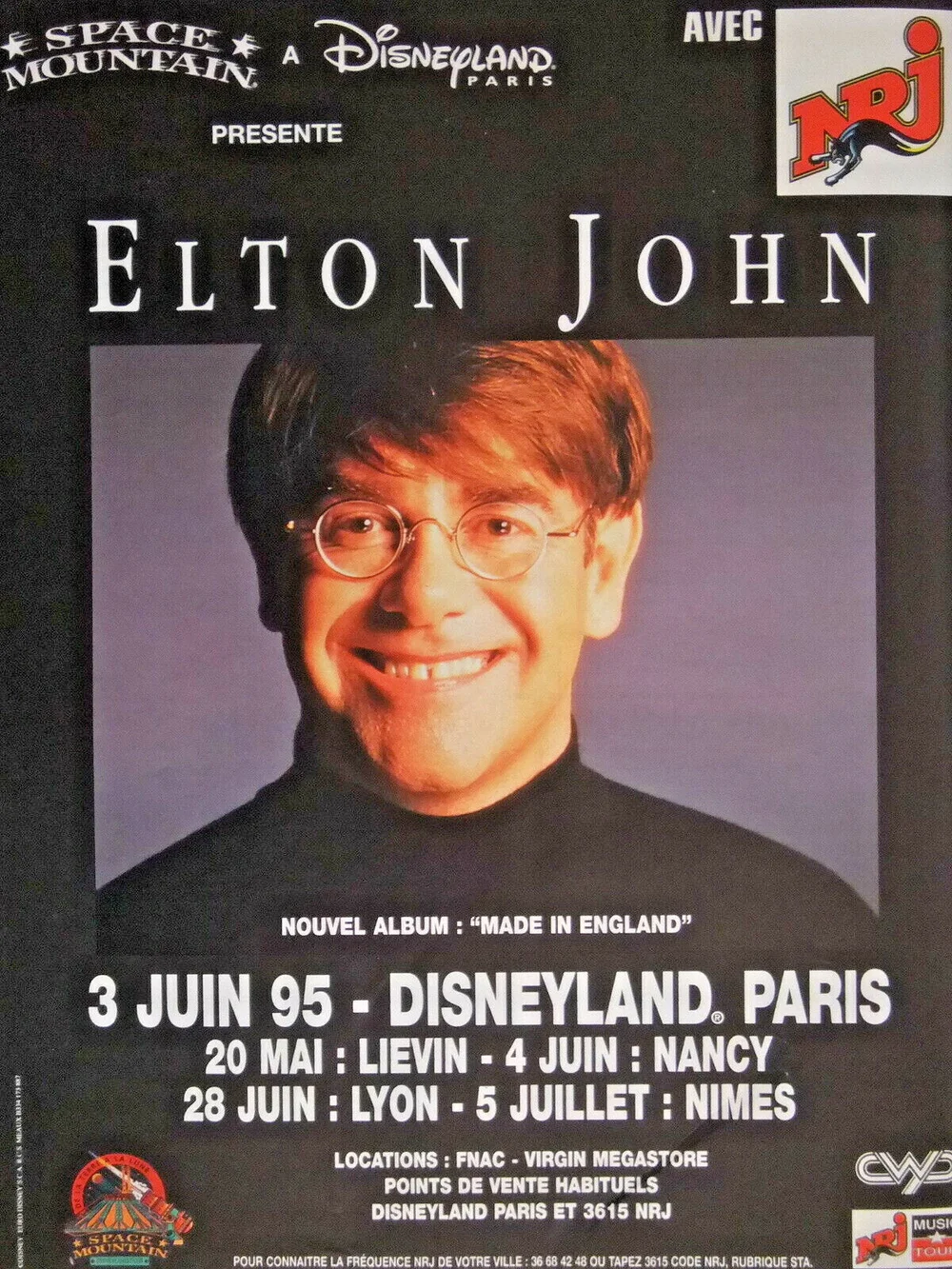
This tension culminates in the unsettling face featured on the poster pinned to the door fragment — an actual Elton John poster produced for his 1995 concert at Disneyland Paris. To this day, it remains the only artist concert officially advertised within the park, and the date coincides precisely with di Giovanni's own childhood visit. The singer’s face has been digitally altered, transformed to provoke a subtle discomfort — a deliberate estrangement. This choice is telling: the figure, far from representing a literal presence in the artist's memory, embodies a kind of temporal and symbolic dissonance.
The American bedroom door, particularly the teenage bedroom door as seen in the 1990s, was a central symbolic element in the early stages of Sleeping Beauty: Episode 1. A marker of intimacy and self-expression, it’s often used as a surface for projection: a place to tape posters, display fragments of identity. In films and TV series from the '90s, the door becomes both a threshold and a screen. It is also something that conceals what is meant to be revealed: a symbolic partition between the visible and the repressed, the domestic and the uncanny. Like in The Twilight Zone, it signals a passage into another dimension, a liminal space where the familiar turns into what we fear, yet cannot fully name.


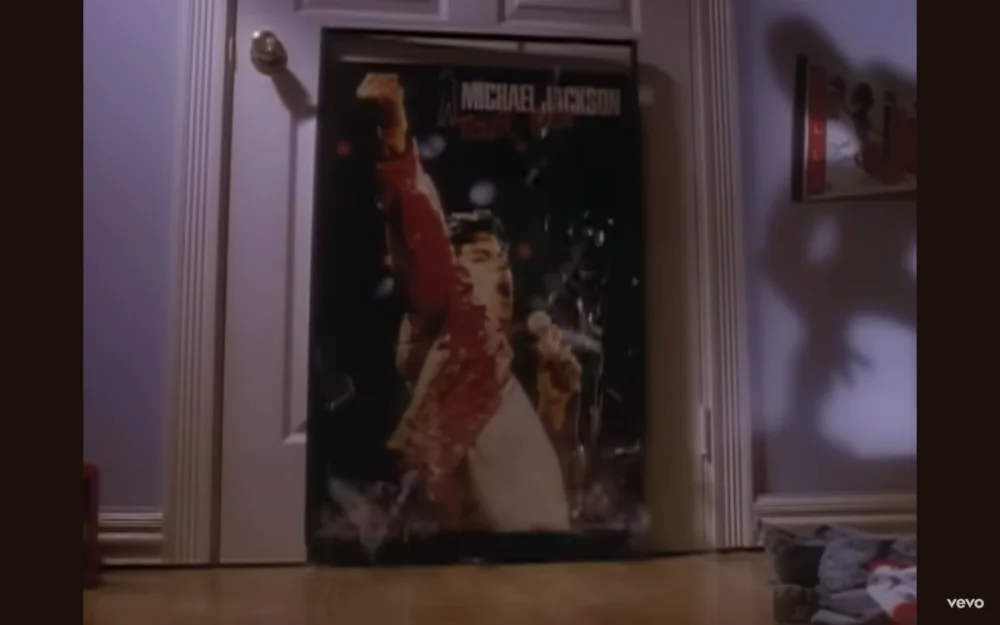
In the installation, the door is split in half and reconfigured into a sculptural fragment. By doing so, it no longer functions as a passage, but as a frame: the door becomes both the surface that once held the poster, and the structure that now frames it. This reversal blurs the line between container and content, decoration and device — echoing the way personal spaces absorb and re-stage fragments of collective memory and popular culture.
Bits and pieces that sparked the vibe behind the Sleeping Beauty logo — pulled from '90s pop culture leftovers.


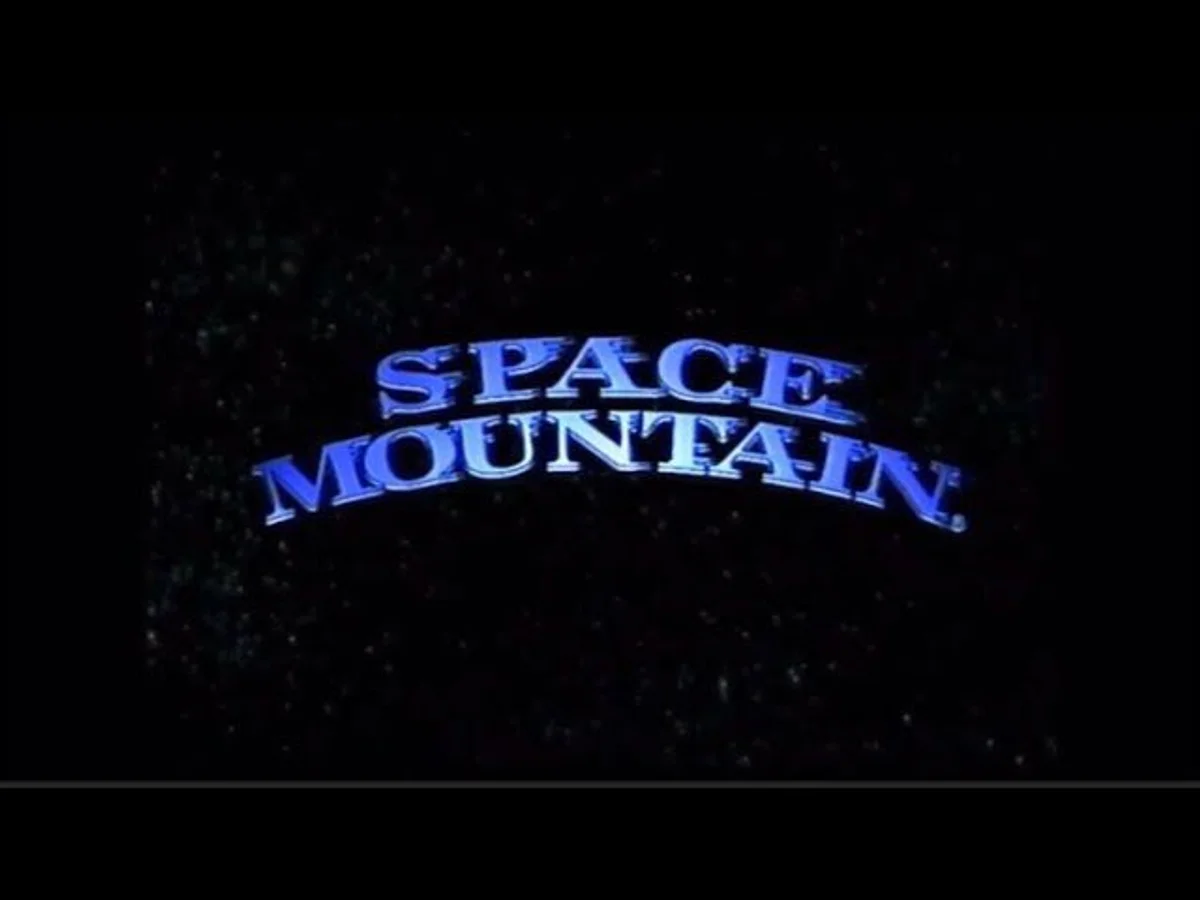
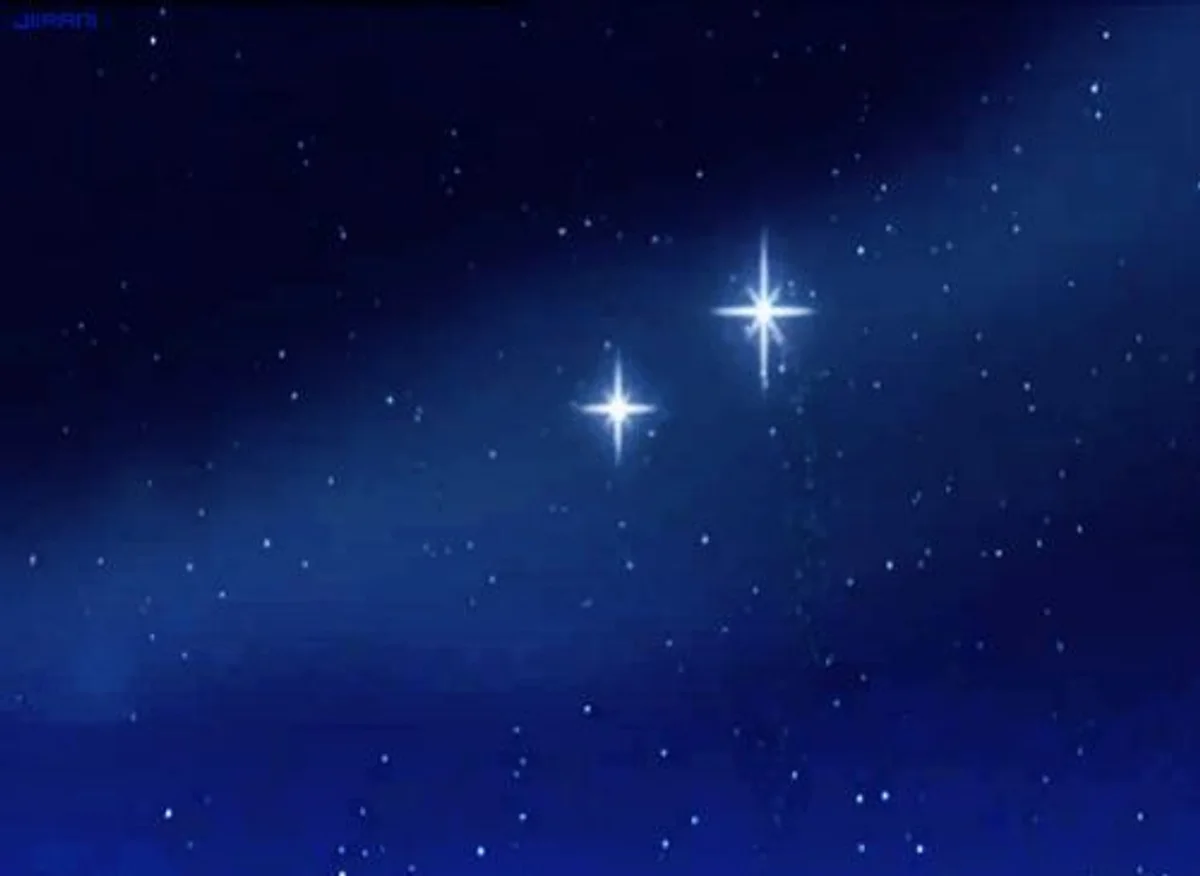


PROCESS
The work on the proportions of the door fragment had to be carefully developed. Artist Cécile di Giovanni and Encore's art producer Nicolas Dau worked closely together to resolve the key challenge: finding the right balance between the proportions of a typical North American door cut in half, large enough to support both the poster and the handle while maintaining its visual impact as an object, and the need for the fragment to remain coherent in scale within the exhibition space.

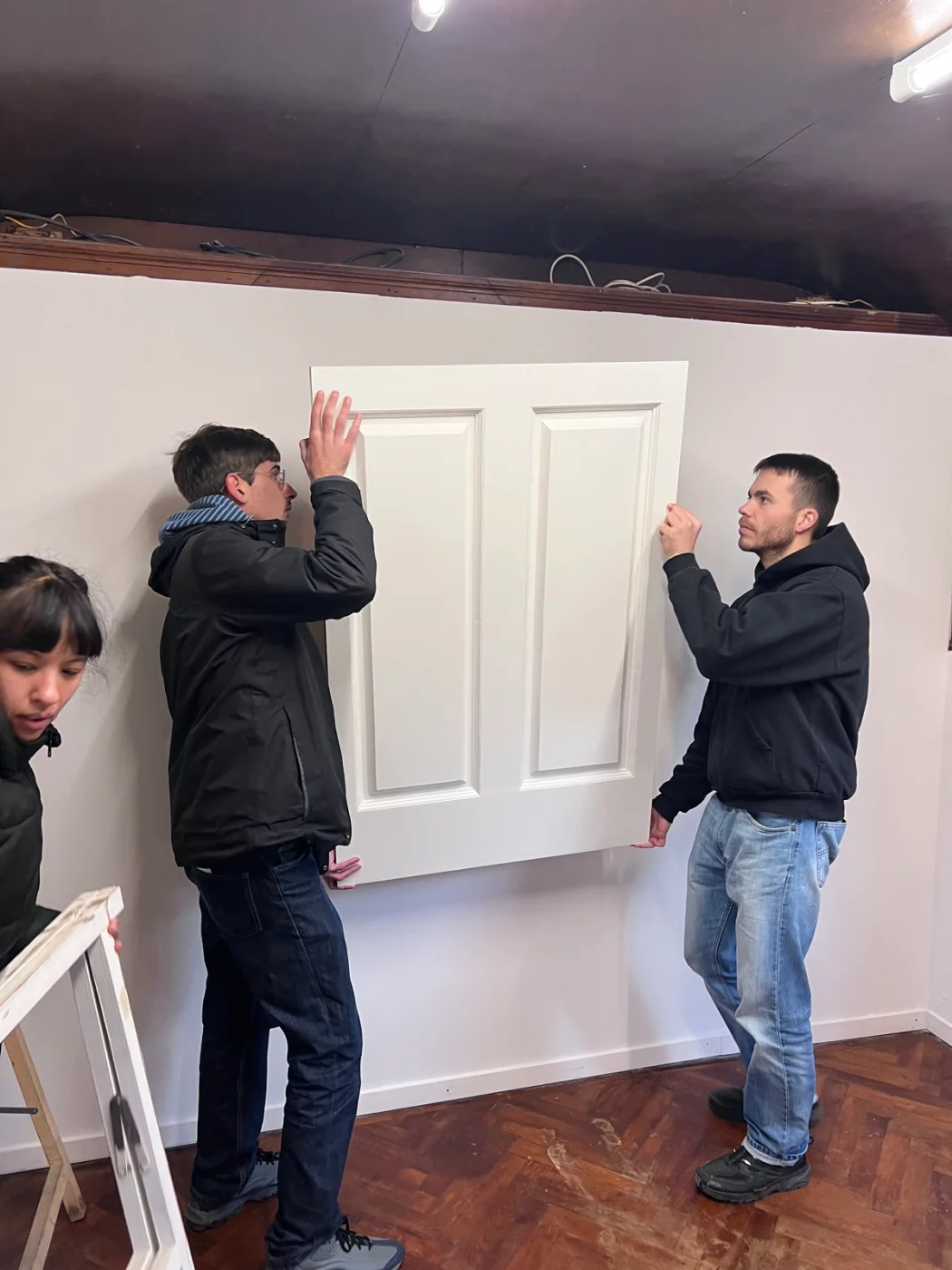

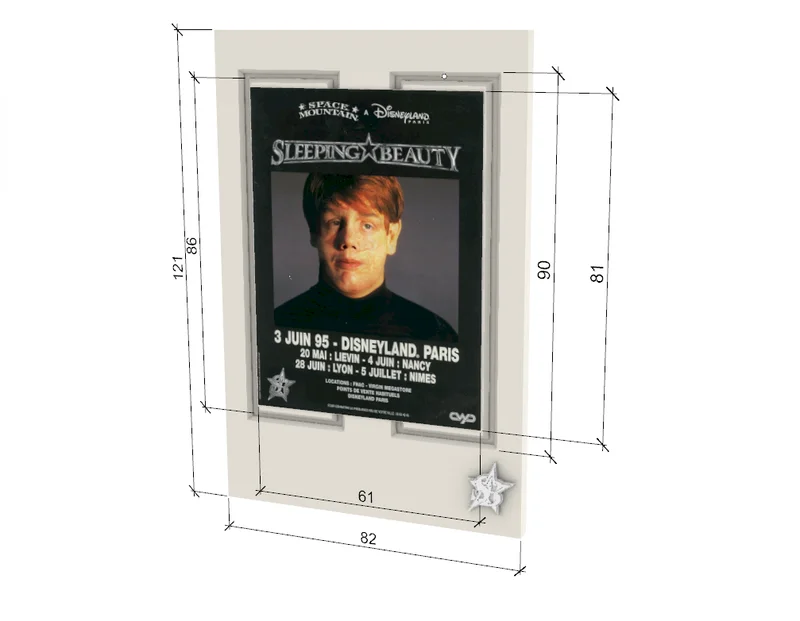
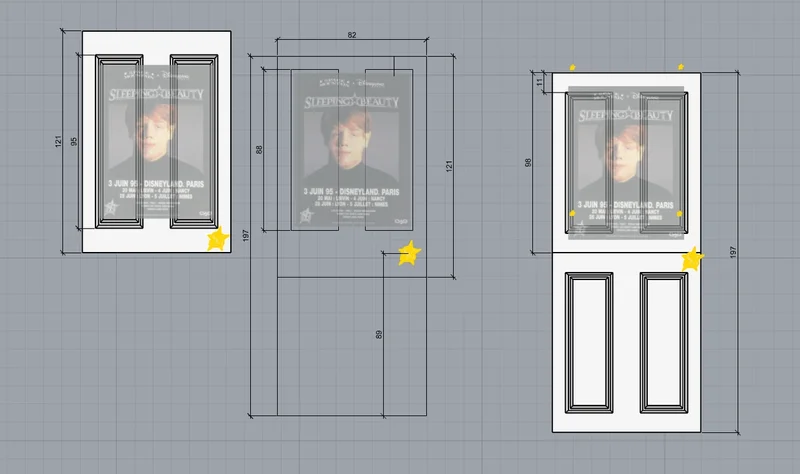
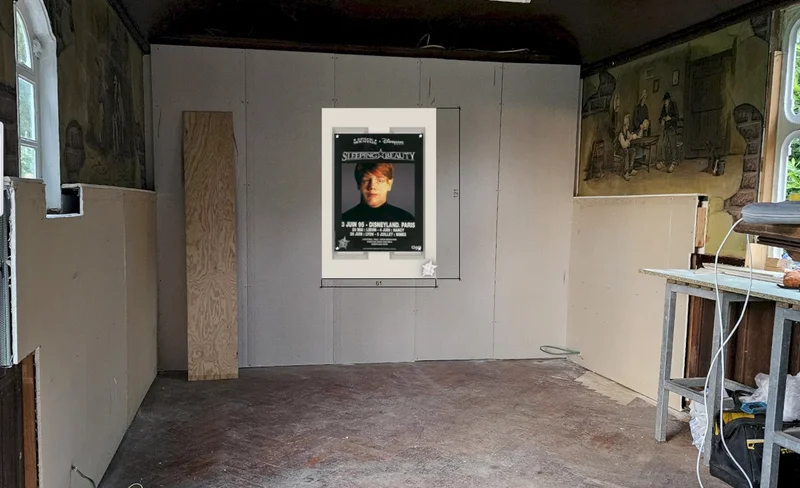
Alongside the work on the door fragment’s proportions, the scale and impact of the handle was carefully developed.
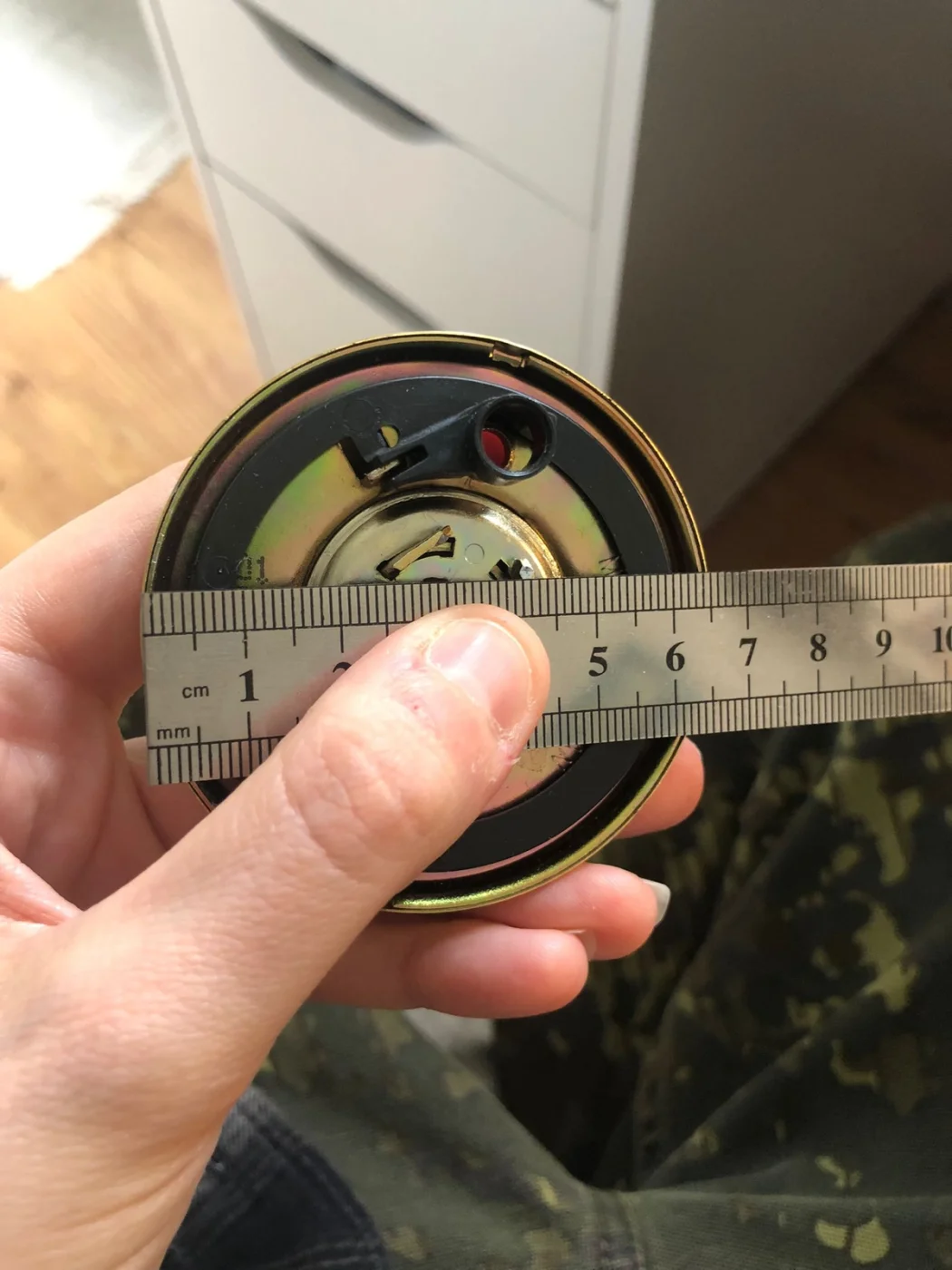
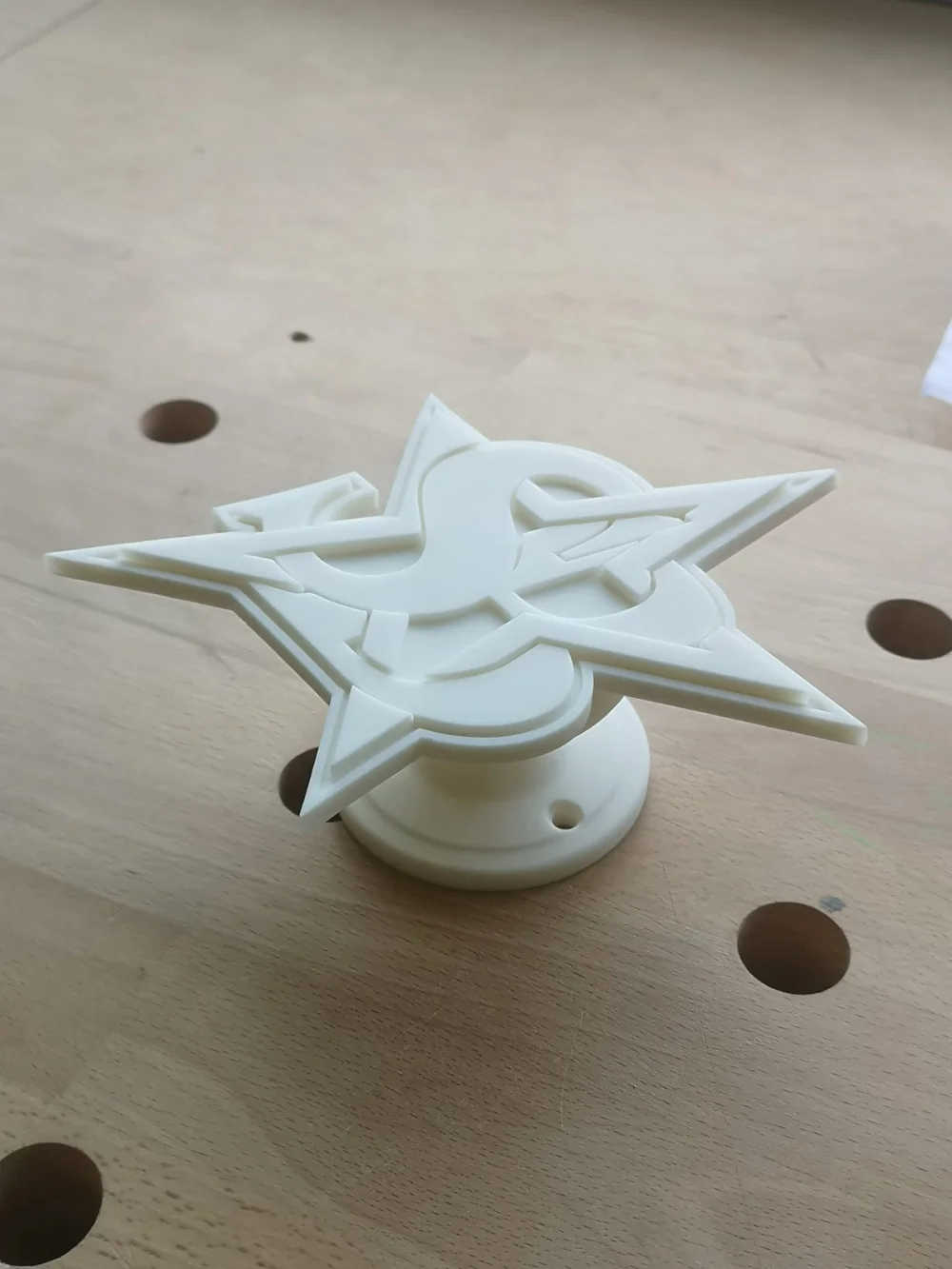
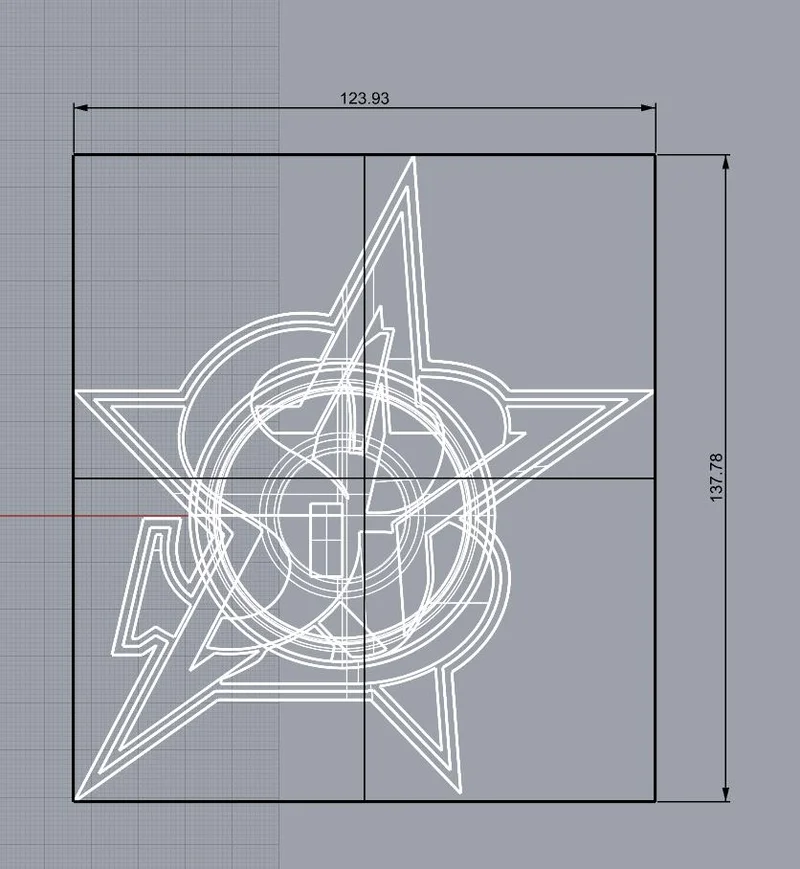

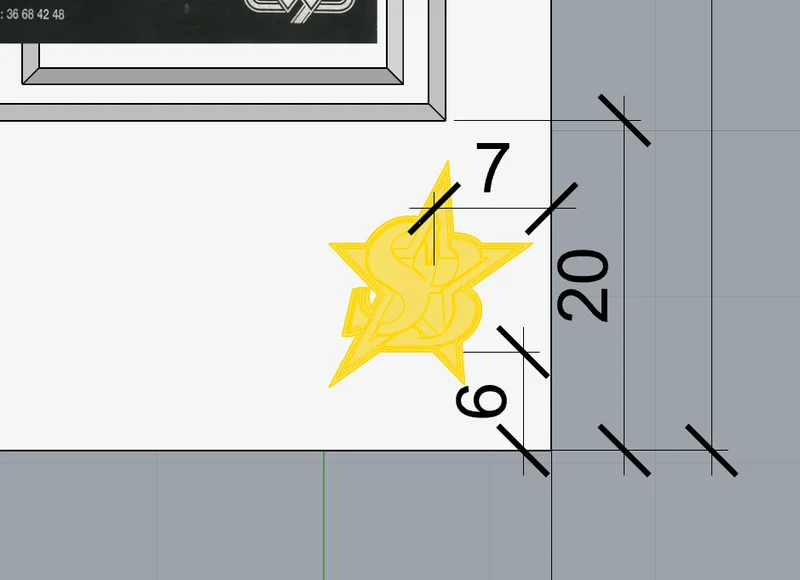
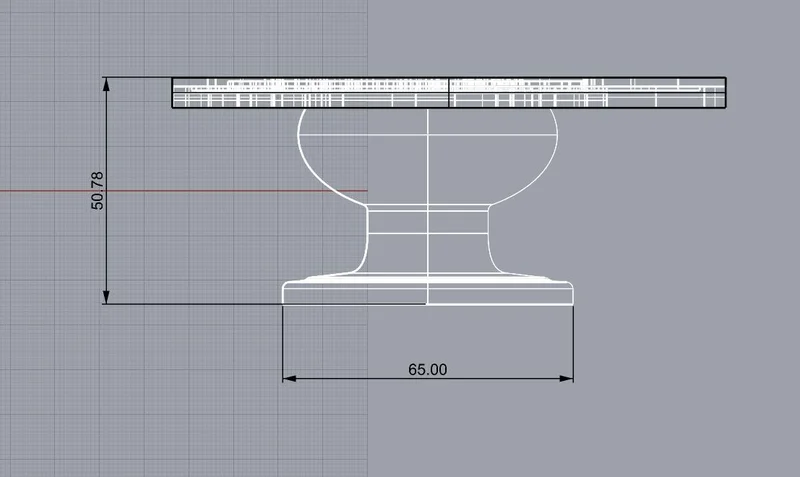
Proportionally, the pushpins had to reflect the visual weight of both the poster and the door fragment.
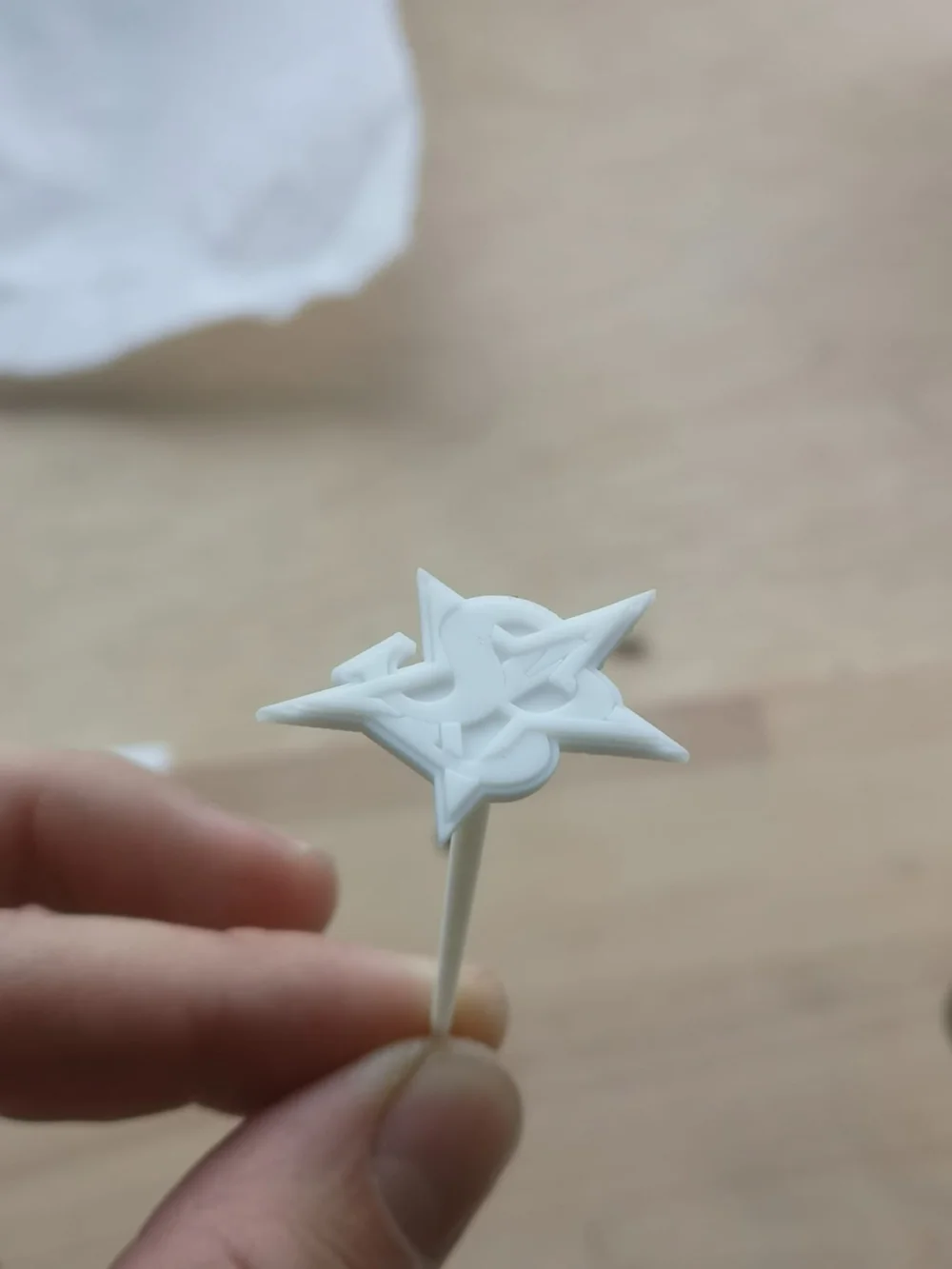
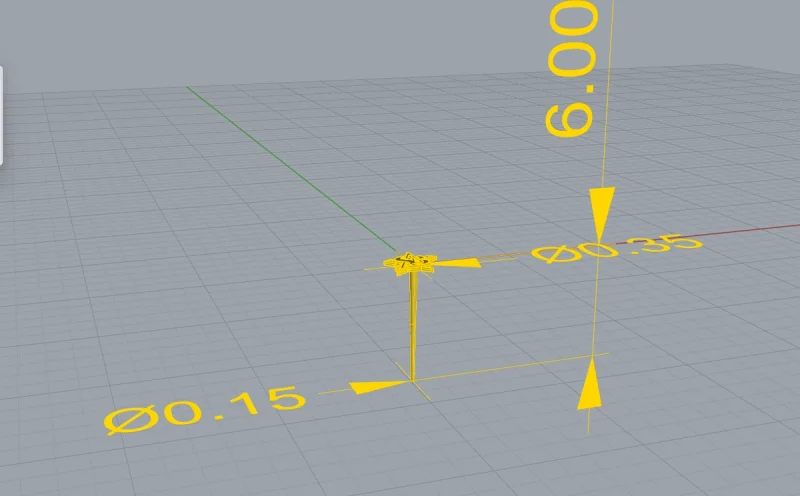
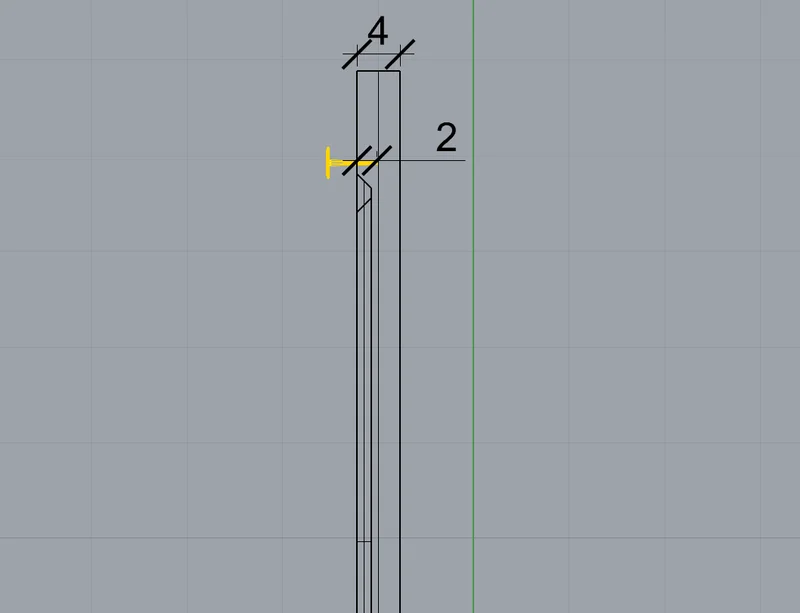

Various proposals by Lucas Masini for the Sleeping Beauty logo — ideas that weren’t used but helped shape the final version.
